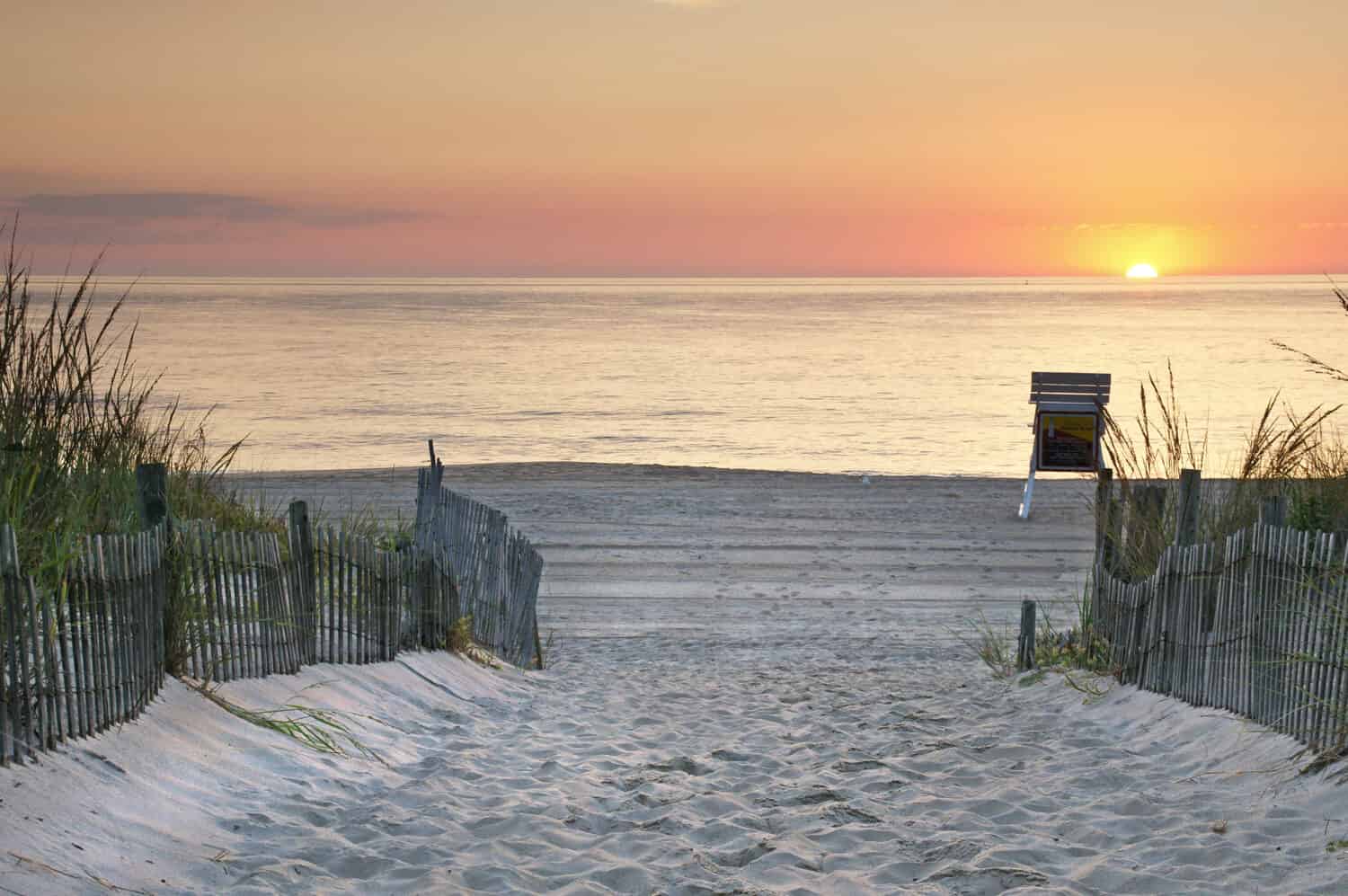Delaware Bay is one of the largest ocean inlets on the East Coast of the United States. Lying between Delaware and New Jersey, it is an estuary of the Delaware River. Saltwater and freshwater mix for many miles down the length of the bay, creating a unique ecosystem. We’ll explore in this article the physical dimensions of the bay, how it compares to other bays, and the wildlife to be found in and around it.
Dimensions of Delaware Bay
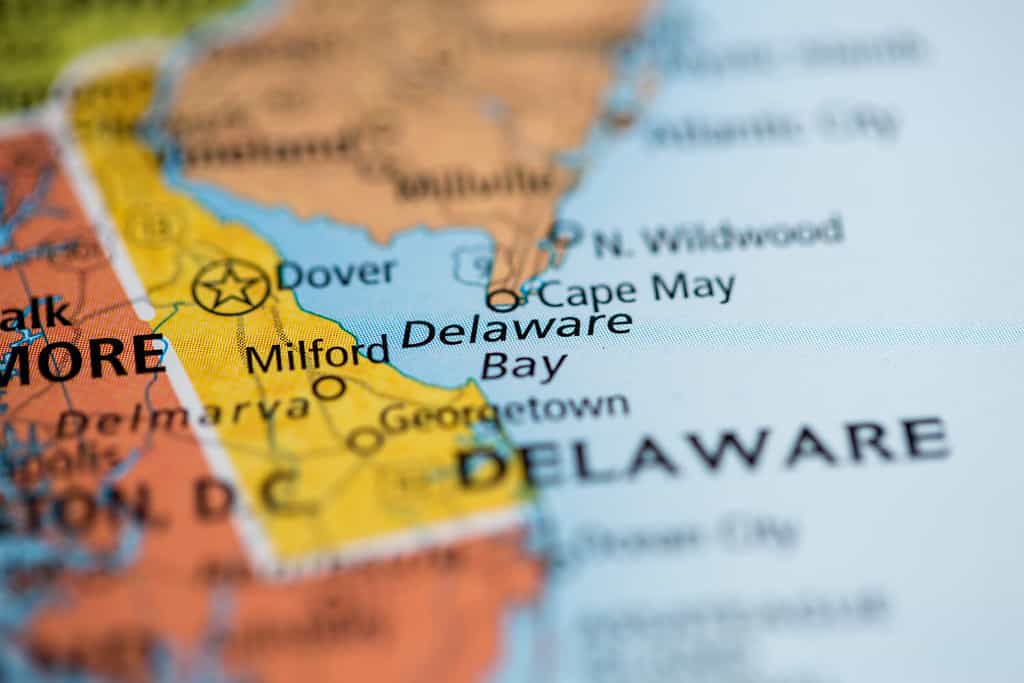
Delaware Bay is a large estuary of the Delaware River where freshwater and saltwater mix.
©SevenMaps/Shutterstock.com
At its deepest parts, Delaware Bay ranges in depth from 26 feet to 148 feet deep. At its widest point, the bay is about 25 miles wide but narrows to 11 miles wide at the entrance. Saltwater from the ocean reaches 50-75 miles into the bay past its mouth. The total water area is 782 square miles.
How does Delaware Bay Compare to Other Bays?
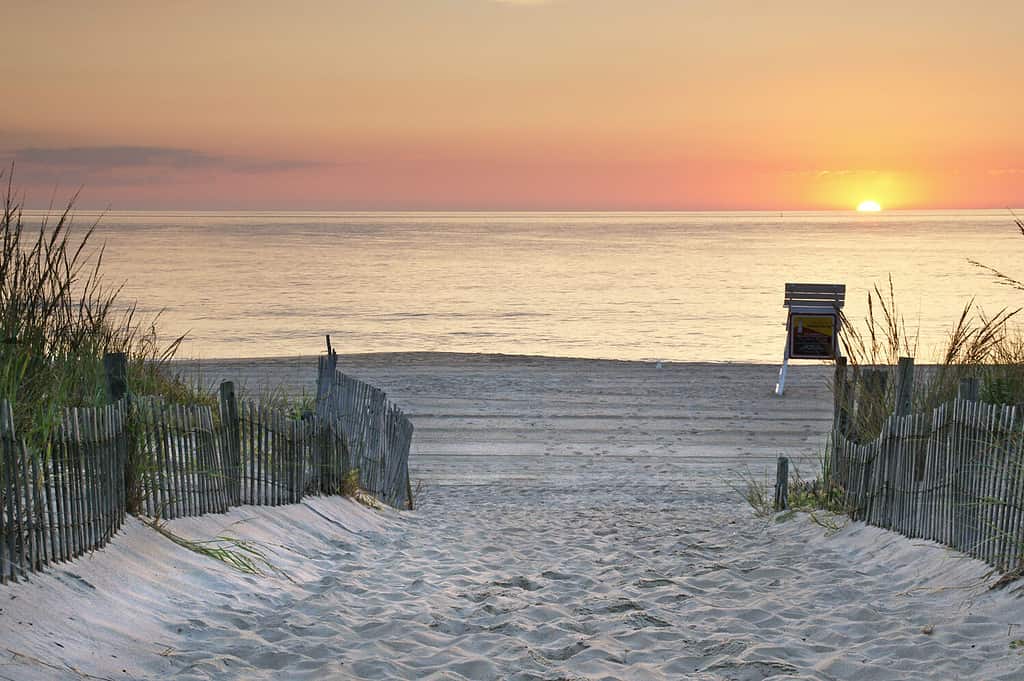
Delaware Bay is a gorgeous vacation spot but it is not as heavily developed as much of the rest of the East Coast.
©Bruce Goerlitz Photo/Shutterstock.com
This table illustrates how Delaware Bay compares to some other large American bays, arranged in order of depth. Delaware bay is midway between Chesapeake Bay and Massachusetts Bay in depth. In area, it is comparable to Massachusetts Bay.
| Bay | Average depth (feet) | Total Area (square miles) |
|---|---|---|
| Chesapeake Bay | 174 | 4479 |
| Delaware Bay | 150 | 782 |
| Massachusetts Bay | 115 | 800 |
| San Francisco Bay | 14 | 1600 |
| Tampa Bay | 12 | 400 |
Ecology of Delaware Bay
The shores of Delaware Bay are not as extensively developed as other coastal areas of the Eastern United States, so there is still a great deal of wildlife in the area. Tourists have an excellent chance of spotting marine life and birds in the area.
Marine Wildlife
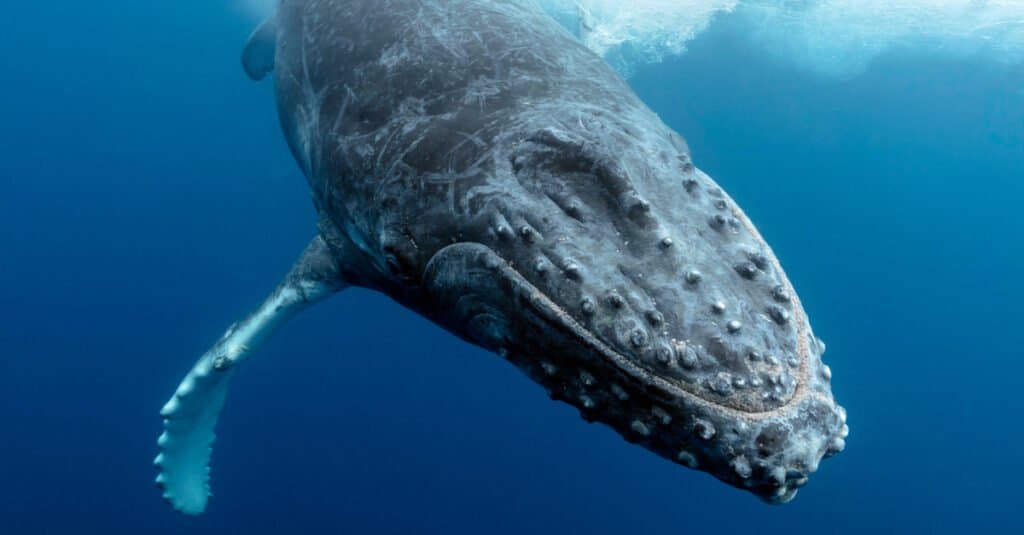
Humpback whales are the largest species you might spot in Delaware Bay.
©Craig Lambert Photography/Shutterstock.com
The waters of Delaware Bay are a habitat for oysters, crabs, eels, and even humpback whales. Some of the fish species there include the black sea bass, striped bass, spiny dogfish, Atlantic sturgeon, Atlantic croaker, and American shad. 8 species of dolphins live in the Bay, including the Atlantic white-sided, Atlantic bottlenose, and striped dolphins. Because the bay is mainly fresh water at one end and saltwater at the other end, it has salinity levels along its length that are suitable for many different types of sea creatures.
Shore Wildlife
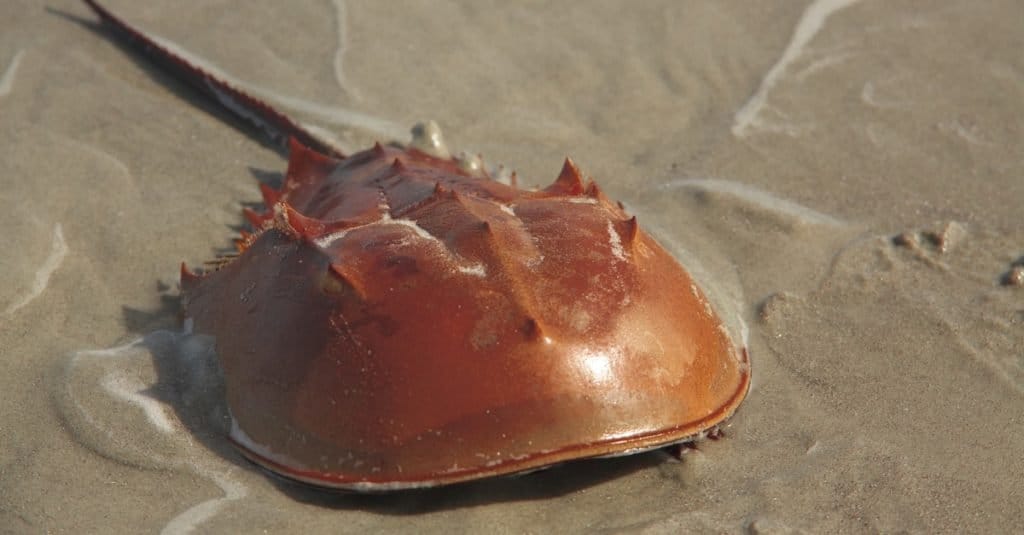
Most of the world’s horseshoe crabs live in and around Delaware Bay.
©SandraG/Shutterstock.com
Forests, mudflats, and salt marshes are some of the main habitats along the shore of the bay. Some of these areas are protected as breeding grounds for species like horseshoe crabs. Delaware Bay has the largest number of horseshoe crabs in the world. Many migrating shorebird species have nesting grounds in the area and feast on horseshoe crab eggs. These include the dunlin, red knot, sanderling, ruddy turnstone, and semipalmated sandpiper. Along with songbirds, raptors, waterfowl, and others, at least 100 migratory bird species spend time in the area, numbering in the millions. It’s a birdwatcher’s paradise!
A Treasure Worth Preserving
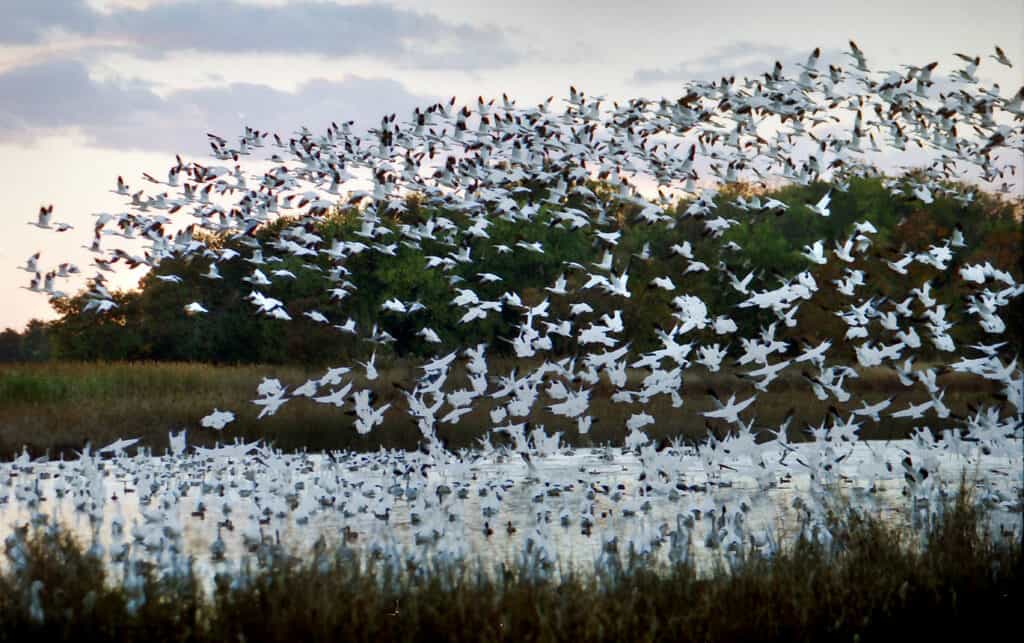
Around 200,000 snow geese winter in Delaware Bay every year.
©iStock.com/bilbowden
When you think about it, it’s really quite remarkable to have a virtually unspoiled bay ecosystem in the heart of one of a highly urbanized megalopolis stretching from Boston down the east coast to Washington, D.C. Pollution is one of the big threats to the Delaware Bay ecosystem, as industrial pollutants, agricultural run-off, and garbage wash down the Delaware River. Overfishing and warming temperatures that alter the environmental conditions are other threats to this unique ecosystem. Hopefully, we and future generations will understand the value of preserving this unique habitat as a small sample of what much of the coast would have been like in decades past.
Thank you for reading! Have some feedback for us? Contact the AZ Animals editorial team.

